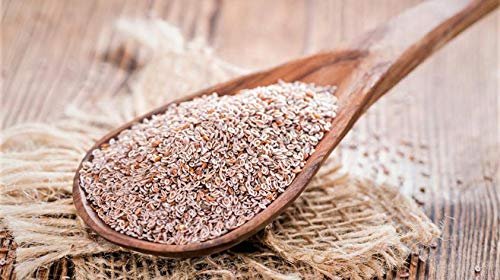Ispaghula is a laxative. The laxative drugs primarily aid in increasing the water content in the feces. The action can be achieved by several different mechanisms that form the basis of different types of drugs used for laxative action.
The effect is generally achieved by one or more than one of the following mechanisms.
- An osmotic action that causes water and electrolytes accumulation, in the intestinal lumen. This increases the volume of fecal content and makes it easier to excrete.
- Action on mucosa epithelia, decreasing the overall absorption of water and electrolytes. The intestinal transit is enhanced indirectly by the liquid bulk.
- Cause an increase in the propulsive activity as a primary action that allows less time for absorption of water and salt as a secondary effect.
Laxatives thus modify the fluid dynamic and mucosal epithelia causing fluid accumulation in the lumen by regulating intracellular responses and physiological processes. Let us understand the drug profile of Ispaghula.
Ispaghula: Drug Profile
| Parameters | Details |
|---|---|
| Category of Drug | Ispaghula is used as a Laxatives drug. Ispaghula or Plantago ovata is known by many common names including desert Indian wheat, blond psyllium, blond plantain, and isabgol. It is a medicinal plant native to Western and Southern Asia. |
| Mechanism of Action | Ispaghula promotes peristalsis by absorbing water in the GI tract. It then helps to form a mucilaginous mass which increases the volume of feces. |
| Indications | Ispaghula is used for (1) 1. Constipation 2. Irritable colon syndrome |
| Well Known Pharmaceutical Brands | Isabgol- Baidyanath Fibopeg- Lupin Limited Laxovel Sf- Eris Lifesciences Psylax- Inga Sat Isabgol- Dabur India Lactifiber- Sun |
| Available dosage forms | GRANULES(flavored and sweetened) |
| Dose | Adult- 6 teaspoonful of water or milk at night before bedtime. Child- 1-3 teaspoonful in water or milk before bedtime. |
| Pharmacology (2) | Ispaghula has a gut-stimulatory effect, mediated partially by muscarinic and 5-HT(4) receptor activation, which may complement the laxative effect of its fiber content, and a gut-inhibitory activity possibly mediated by blockade of Ca(2+) channels and activation of NO-cyclic guanosine monophosphate pathways |
| Contraindications | 1. Intestinal obstruction 2. Colonic atony 3. Difficulty in swallowing |
| Precautions | 1. Salt restriction 2. Interactions |
| Adverse Effects | 1. Abdominal discomfort 2. Flatulence 3. Gastrointestinal obstruction |
| Pregnancy Category |
Read about:


Pingback: Diarrhea: how to treat diarrhea and antidiarrheals - PharmaCampus